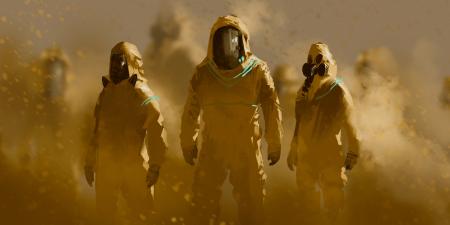It has been said of Americans that we seem to have an insatiable demand for seeing and hearing from people who are the victims of disasters and emergencies. Reviewing an addiction memoir in the New York Times Book Review, David Carr, himself a recovering addict and memoirist, writes, “Car crashes happen in different ways, but they all end the same, with the rest of us looking on in sympathy and prurience. ‘I hope they’re O.K., but I’d like to get a look if they’re not’” [1].
Exactly. Just ask Ruth Shulman and her son, two ordinary California residents leading lives out of the public eye until their car rolled over on a highway, trapping them inside and leaving Ruth a paraplegic [2]. As it turned out, the helicopter medic crew that came to their rescue was filming and taping the incident for On Scene Emergency Response, a television documentary that aired months later. Neither Shulman had given permission to be interviewed or taped; in fact, the injured Mrs. Shulman was unaware that her nurse was wired and, after the program aired, she sued the show for invasion of privacy.
The California Supreme Court was quite thoughtful in weighing Mrs. Shulman’s claims, balancing the legitimate public interest in an accident that occurred on a public highway against her expectation of privacy. The court shows deference to the First Amendment and especially to the editing process, allowing the media to determine for themselves what should be deemed newsworthy and therefore holding that, as a matter of law, the details of the rescue “were of legitimate public concern because they were substantially relevant to the newsworthy subject of the piece,” which, despite its magazine format, the court considered news [2]. But the court also held that Mrs. Shulman could reasonably expect that the helicopter, like a hospital room, would be a private place which the media had no right to enter. In the words of the California court, “In short, the state may not intrude into the proper sphere of the news media to dictate what they should publish and broadcast, but neither may the media play tyrant to the people by unlawfully spying on them in the name of newsgathering” [2].
So the law gives journalists a certain amount of latitude, but it doesn’t address the ethical questions—roughly, when are we voyeurs gawking at an accident, and could gawking ever serve a larger purpose? Do journalists themselves balance the need for information against an individual’s right to privacy or the possible effects of coverage on the viewing population?
Journalism ethics codes are direct, if not entirely helpful about what is required of the journalist. Under the heading “Minimize harm,” with a tacit nod to the medical profession, the Society of Professional Journalists (SPJ) urges the media “to show compassion for those who may be affected adversely by news coverage” and to “avoid pandering to lurid curiosity” [3]. The code calls for sensitivity when “seeking or using interviews or photos of those affected by tragedy” and recognition that “gathering or reporting information may cause harm or discomfort”[3]. The newsworthiness test is a useful benchmark against which to assess whether media coverage is disturbing for legitimate reasons or idly sensational—although even when there is consensus on newsworthiness (think tsunami, hurricane, earthquake), critics raise questions about the extent and intensity of coverage.
Photographs of Disaster: Controversial Coverage
An Indian Ocean tsunami on December 26, 2004 killed 275,950 people [4], after an earthquake released energy equivalent to 23,000 Hiroshima-type atom bombs [5]. The ensuing media coverage was global, ranging from overarching explanations of the region’s geology and disease, poverty, and homelessness among the victims to emotional segments on the survivors’ personal stories. The coverage became a template for Hurricane Katrina, which struck New Orleans and the Gulf Coast on August 29, 2005, and the devastating Haitian earthquake on January 12, 2010. Massive destruction and tragedy are followed by thousands of news stories generating billions in relief dollars. Individual reporters stand out either for excellent and sensitive treatment of the victims or for grandstanding that borders on exploitation.
Taken as a whole, the work of the reporters covering these disasters has been more heroic than exploitive, with reporters working under stressful, often frightening conditions to make the world aware of unfolding tragedies of enormous magnitude. On balance, the benefit of telling those stories outweighs the possible cost to individual privacy and what may be seen as a disregard for “appropriateness.” (In many cases, stories that would seem to be sensational are not invasive; they appear with the consent, sometimes even at the urging of the subjects, who may have their own motives for wanting their stories told [6].) Without the focus on the often horrific details of individual experiences, the stories would take on a vagueness and generality that make a distant or overwhelming tragedy even more difficult to grasp.
The power of the emotional appeal is most resonant in the tragedy of September 11, 2001. The coverage suffered from the paradox of being both overwhelming and often without content. For hours after the planes struck and then after the buildings collapsed, no one really understood what was happening or its magnitude, including reporters, especially on-air anchors. No debate was more heated than that over whether to show video and photographs of bodies falling from the twin towers of the World Trade Center. For more than 90 minutes on that day, perhaps as many as 200 people, one by one, went out windows or the roof of the towers [7].
One image, by AP photographer Richard Drew, became the icon of this story, a kind of stop-action view of The Falling Man as he falls, head first, one knee slightly bent, with the two towers standing clearly behind him [7]. Esquire writer Tom Junod recounts, in painful detail, a reporter’s attempt to identify the man. Several families reacted with anger to reporters’ inquiries, although others genuinely wondered whether the Man could be their loved one. Junod observes that the photo was published just once by most news outlets, then disappeared:
Papers all over the country, from the Fort Worth Star-Telegram to the Memphis Commercial Appeal to the Denver Post were forced to defend themselves against charges that they exploited a man’s death, stripped him of his dignity, invaded his privacy, turned tragedy into leering pornography….
At CNN, the footage was shown live, before people working in the newsroom knew what was happening; then after what Walter Isaacson, who was then chairman of the network’s news bureau calls “agonized discussions” with the “standards guy,” it was shown only if people in it were blurred and unidentifiable; then it was not shown at all….
In the most photographed and videotaped day in the history of the world, the images of people jumping were the only images that became, by consensus, taboo—the only images from which Americans were proud to avert their eyes [7].
Junod disparages the media critics and, to some extent, the media, writing,
In a nation of voyeurs, the desire to face the most disturbing aspects of our most disturbing day was somehow ascribed to voyeurism, as though the jumpers’ experience, instead of being central to the horror, was tangential to it, a sideshow best forgotten [7].
Junod’s argument is essential to understanding both why the media tell these stories and why they must. The idea that the image of The Falling Man could put viewers in touch with what he experienced is crucial. Sanitized stories about groups of victims or general circumstances may inform to a degree, but they also allow us to avoid experiencing the true devastation occuring on the ground. Emotional appeals—and disturbing images of disaster victims are the very epitome of emotional appeal—illuminate the reality of the situation in ways that mere facts cannot.
Time magazine managing editor Richard Stengel made this point in an editor’s note explaining his decision to run a cover photograph on August 9, 2010, depicting Aisha, an 18-year-old Afghan woman, hauntingly beautiful but maimed by a hole and scar tissue where her nose had been cut off by her husband as a Taliban court-ordered punishment for fleeing his family [8]. Stengel acknowledges that the photo will be seen by children, that it is disturbing. Predictably, media critics did accuse the magazine of running the photo for political purposes and of being overly sensational. Anticipating those comments, Stengel wrote,
But bad things do happen to people, and it is part of our job to confront and explain them. In the end, I felt that the image is a window into the reality of what is happening—and what can happen—in a war that affects and involves all of us. I would rather confront readers with the Taliban’s treatment of women than ignore it. I would rather people know that reality as they make up their minds about what the U.S. and its allies should do in Afghanistan [8].
Stengel made the right call. By showing readers the truth, by not putting a filter between readers and the image, by describing how Aisha’s brother-in-law held her down while her husband pulled out a knife and sliced off her ears, then her nose, Time makes it impossible for us not to understand what restoring power to the Taliban means to women. The photograph of Aisha’s face may not spur us to further involvement in Afghanistan; it may be that most Americans are inured to violent images and don’t really care about the fate of oppressed women in Afghanistan. But journalists’ moral responsibility isn’t to elicit a particular reaction or outcome; their responsibility is to bring home the truth.
References
-
Carr D. Crack agent. New York Times Book Review. June 25, 2010. http://www.nytimes.com/2010/06/27/books/review/Carr-t.html. Accessed August 20, 2010.
-
Ruth Shulman et. al. v Group W Productions, Inc, et al, 59 Cal Rptr 2d 434 (1996).
-
Society of Professional Journalists. Code of Ethics. http://www.spj.org/pdf/ethicscode.pdf. Accessed August 20, 2010.
-
Associated Press. 2004 deadliest quake year in 450 years: U.S. Geological Survey puts tsunami death toll at 275,950. MSNBC. February 10, 2005. http://www.msnbc.msn.com/id/6948775/. Accessed August 20, 2010.
-
The deadliest tsunami in history? National Geographic News. January 7, 2005. http://news.nationalgeographic.com/news/2004/12/1227_041226_tsunami.html. Accessed August 20, 2010.
-
Keilman J. Tribune series: one woman’s fight against malaria. Chicago Tribune. http://www.chicagotribune.com/health/chi-malaria-dawn-dubsky-gallery,0,3021987.storygallery. Accessed August 20, 2010.
-
Junod T. The fallen man. Esquire Magazine. September 2003. http://www.esquire.com/features/ESQ0903-SEP_FALLINGMAN. Accessed August 20, 2010.
-
Stengel R. The plight of Afghan women: a disturbing picture. Time Magazine. Aug. 9, 2010. http://www.time.com/time/world/article/0,8599,2007269,00.html. Accessed August 20, 2010.



